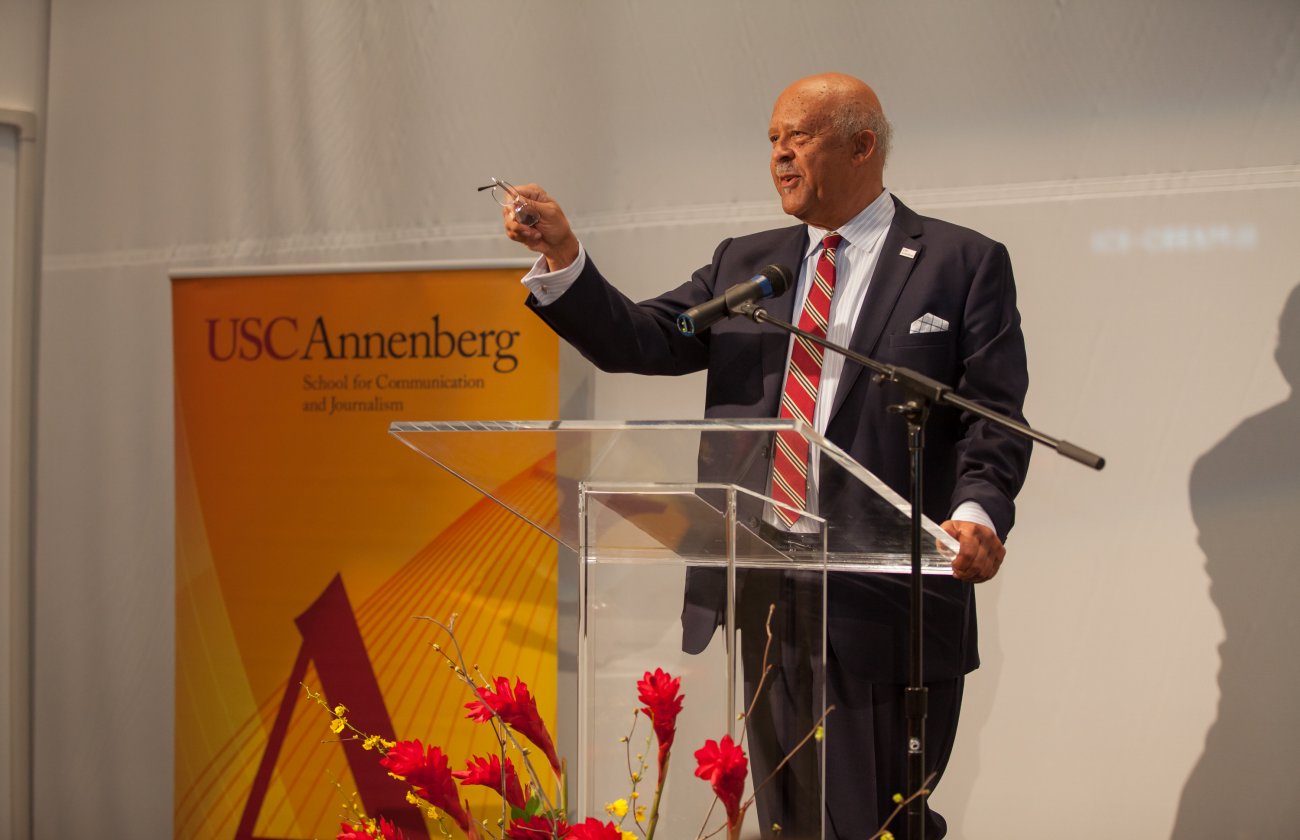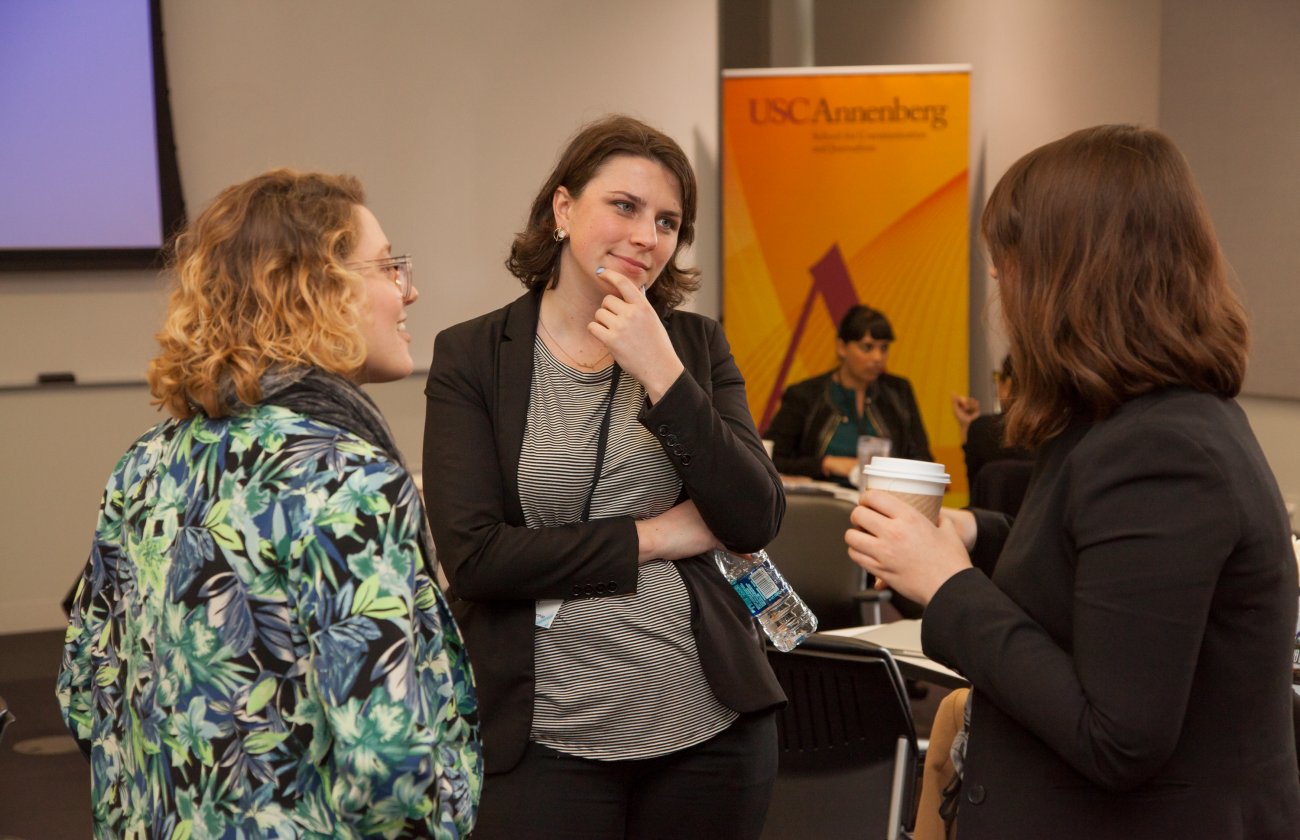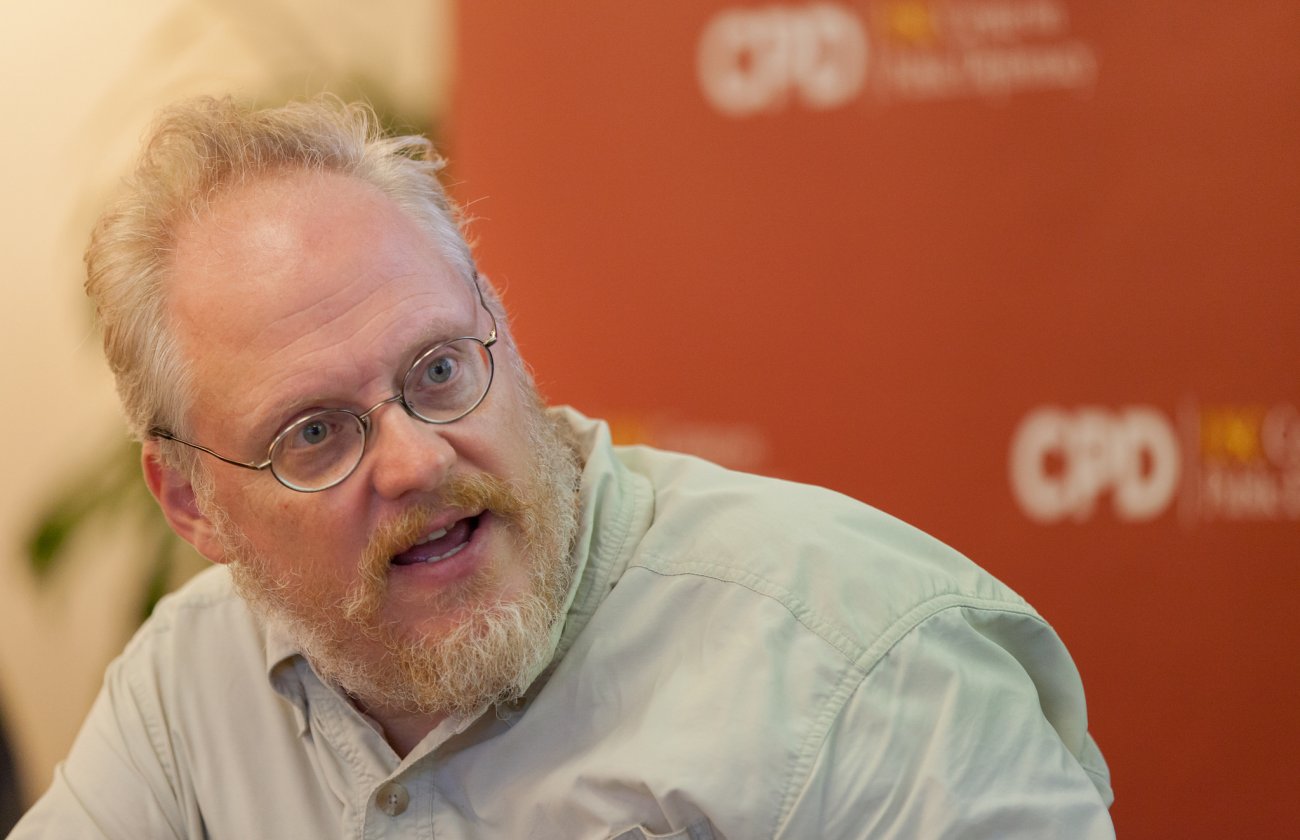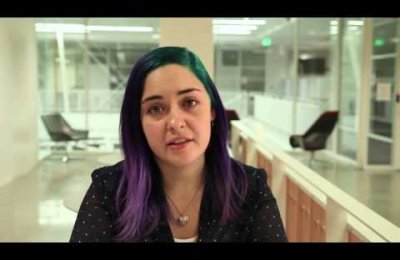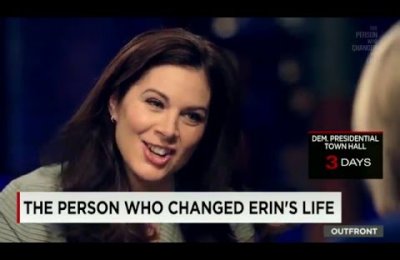By Olivia Niland
The journalism class convening in USC Annenberg's Geoffrey Cowan Forum on Thursday evening could have easily been mistaken for a corporate meeting: about a dozen master's degree students in professional attire seated around a circular table, listening intently and taking notes as Michele Wein Layne, Regional Director of the Los Angeles Office of the Securities and Exchange Commission (SEC), addressed the room.
“Before I begin, I just want to make an admission that what I say today are my own views and do not necessarily represent those of the Commission,” Layne said laughingly, setting the tone for the informative but conversational 90-minute discussion.
In addition to the students of USC Annenberg adjunct Public Relations Professor Eric Miller's Journalism 597: “Financial and Investor Communications,” several other students and faculty attended the discussion, which covered high-profile legal cases familiar to the students studying investor relations. The talk also addressed timely issues such as the use of social media by public companies and investors in the distribution of information.
Layne began the discussion by outlining the threefold mission of the SEC as that of protecting investors, creating a fair and orderly marketplace and ensuring full and fair disclosure.
“This is what is very significant for all of you,” Layne said, addressing the students. “Transparency and full and fair disclosure are really at the heart of so many of the securities laws.”
The rising use of social media by public companies has made regulating the fairness of disclosure increasingly difficult, Layne said, as companies risk making the disclosure of certain information “selective” if only certain followers or social media users are able to see it, or of omitting important cautionary language mandated by the SEC.
“The abbreviated and instantaneous nature of social media really does make it pretty difficult to incorporate meaningful cautionary language.” Layne said. “Is it really possible to provide the necessary reconciliation and comparable measures when you're limited to 140 characters in a tweet? It's an interesting thing to think about.”
Layne referenced a 2013 study that quantified public companies' use of social media in investor relations. The research, conducted by Q4 Web Systems, found that 96 percent of the companies profiled had a Twitter account, and 72 percent used Twitter as a tool for investor relations, more than any other social media platform. The study concluded that StockTwits, Facebook and Google+ were also widely used social media tools used by both public companies and investors.
The discussion also touched upon high-profile disclosure cases involving companies such as Apple and Netflix, among others. Both Layne and Miller noted how disclosure disputes tend to affect a company's stock, as do decisions of whether a company should be made public and thus subjected to SEC laws and regulations.
“Deciding whether a company should go public obviously has certain advantages like liquidizing the use of stock for acquisitions, increased visibility and subsequent offerings to raise capital,” Layne said. “The disadvantages are the expense, the time and then, of course, you're subject to direct SEC regulatory oversight.”
“And you have to hire IR [Investor Relations] people,” added Miller, eliciting laughter from the students.
After the conclusion of Layne's talk, students inquired about her own career and how she came to become an SEC Regional Director. Layne, who received her law degree from USC and began working at the SEC 18 years ago, spoke highly of the Commission's mission.
“It is such a luxury as a lawyer to be paid a respectable salary to be charged with doing the right thing,” Layne said. “At the end of the day, you don't have to bring the case if it's not the right thing to do. There's never once been a case that we brought or position that we took that I didn't 100 percent agree with.”
Further questions were asked by the staff and students in attendance, revolving mainly around the differences between the kind of investor relations taught in classrooms and the kind increasingly being used in real-life applications. The discussion also turned to the fact that the majority of the investor relations students present were women, mirroring an increasing demographic trend in the industry.
“There's really been an effort to level the playing field in investor relations: our current SEC chair, Mary Jo White, is a woman, and her predecessor is a woman,” Layne said, adding that many women hold high positions in the SEC. “There are more women CEOs and CFOs now than ever before, but still, in comparison to what the population is, it's pretty staggering.”
Layne also noted how infrequently she was able to take a step away from her day-to-day work and speak to students, and the discussion, which was billed as a “rare opportunity” to hear from an SEC executive, left many of those in attendance with a better understanding of the industry.
“I thought this was a very informative talk, and very useful for investor relations students because we will have to conform to SEC regulations,” said Sun Jingxuan, a master's candidate in Strategic Public Relations from China. “As an international student, I'm also very curious to know how the SEC in America operates.”
Professor Miller, who noted that his Journalism 597 classes host guest speakers about 80 percent of the time, also acknowledged how rarely representatives from the SEC are able to give talks to the public.
“This is the first time we've had someone from the Commission come speak. We're the most heavily regulated sector of journalism that Annenberg touches, so this is a pretty big deal,” Miller, who also serves as the Senior Vice President of the IR company Financial Profiles, said of investor relations journalism. “The SEC has set a mandate to educate as much as possible.”
Annenberg Professor Jerry Swerling, who directs Public Relations Studies at USC Annenberg and leads the Strategic Communication and PR Center, also attended the talk. He echoed Miller's sentiment.
“The SEC is the ultimate authority on investor relations,” Swerling said. “This is a really exciting opportunity for students.”

